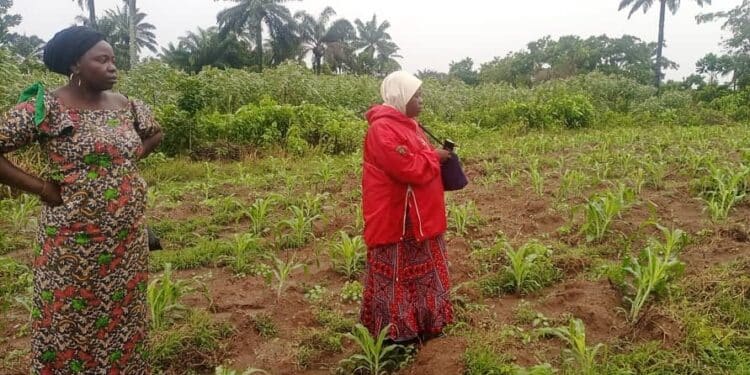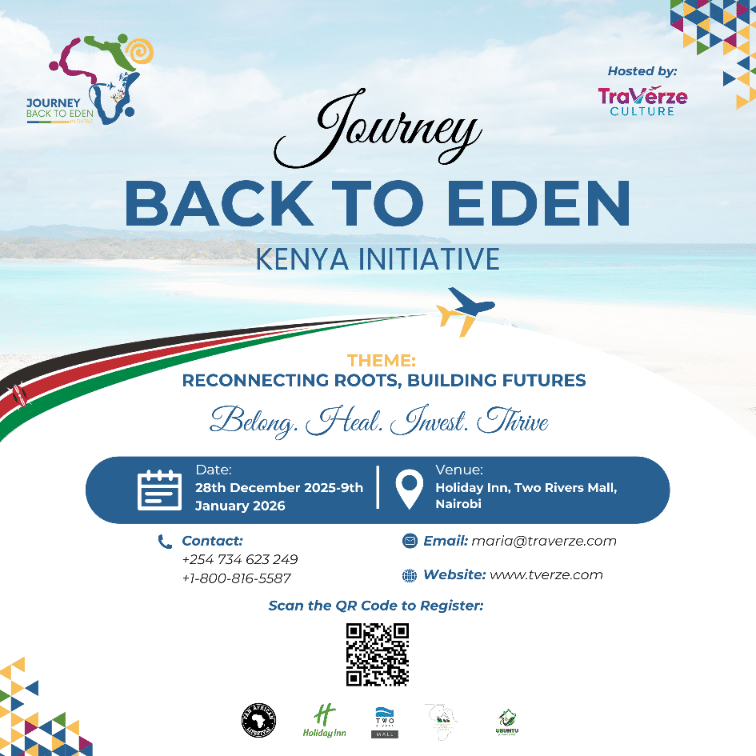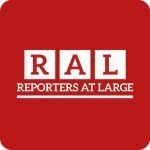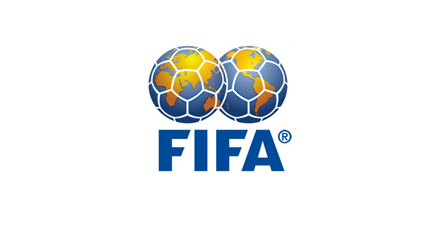The Oyo state government introduced the Sustainable Action for Economic Recovery (SAfER) project in February 2024, a one-billion-naira initiative to provide financing and farming inputs to 10,000 smallholder farmers in the state. However, a field investigation shows that smallholder women farmers in Oyo have yet to fully benefit from this initiative, which is now in its fourth phase.
In the first phase of SAfER, the Oyo government gave farmers an N460 million loan to grow their businesses. It also distributed 24,000 bags of 50 kg of maize to 2,000 poultry farmers and fish feed to 1,000 farmers. In the second phase, 3,000 bags of 15 kg of fish feed were distributed to 1,000 farmers, and N550 million was disbursed to various farmer categories.
The third phase, which commenced in April 2024, was purportedly focused on distributing agricultural inputs to farmers, including supporting 1,000 pig farmers across the state with two bags of 50 kg of feed and two bottles of disinfectant each.
Despite these interventions, Atinuke Akinbade, the Oyo State chairperson of the Smallholder Women Farmers Organisation of Nigeria (SWOFON), highlighted three significant problems encountered: impersonation, bottlenecks in accessing SAfER and other loans/grants, and weak budget formulation and implementation in the agricultural sector, which should support smallholder women farmers.
According to Akinbade, the main issue with the SAfER initiative is the government’s distribution mechanism, which leaves room for impersonation and limits the access of many women farmers to the intervention. She disclosed that only one woman farmer from their group was selected to benefit from the farming input distribution during the third phase. Even this one farmer was subsequently disqualified due to irregularities in the name she submitted.
During the second phase, Akinbade said that three members of SWOFON received a pack of day-old chicks, two starter feeds, and two fish feeds. However, she emphasised that this level of support is not enough to significantly impact the livelihoods of the thousands of smallholder women farmers in the state.
Even more futile are the efforts of women farmers to access loans under the initiative due to the stringent requirements associated with the application process.
“Only two people out of our women farmers got the form to apply for loans under the SAfER initiative, and the two women have been unable to submit the forms due to the clause demanding a would-be guarantor from the civil service,” Akinbade said.
As a security measure, the state government mandated that loan applicants under the initiative provide a guarantor from the civil service at grade level 07 or above. However, this requirement has only created barriers, making the loan application inaccessible to the women farmers who need it most.
A smallholder woman farmer based in Oyo East Local Government Area (LGA), Oluwatoyin Oyedeji, said she was lucky to get the application form; her joy was short-lived when she could not get a willing guarantor to support her application.
“Only two of us from SWOFON were lucky to have the forms, but neither could get a guarantor. I think they (potential guarantors) were afraid of standing as guarantors; that was how I couldn’t submit the form till now,” Oyedeji said.
Another smallholder farmer based in Akinyele LGA, Zainab Irekeola, said she successfully filled out the loan application form but could not complete the process because nobody she knew in the state civil service had attained the level to qualify as a guarantor.
To address this bottleneck, the state government reviewed the clause in April 2024, allowing the chairperson or any executive of a registered smallholder farmers group to act as a guarantor for its members. However, according to the women farmers, this move was made late, as they could no longer access the application forms.
Oyedeji’s inability to access the loan halted her plan to cultivate more than one hectare during the planting season. “I was planning to cultivate about seven hectares of land if I got the SAfER loans, but now I can only do one hectare,” Oyedeji said.
Irekeola suffered a similar fate, stating she had meagre funds to sustain her farm. “This is a huge setback for me. I had planned to buy farm inputs with the loan to cultivate on the farmlands that I got through the help of my husband, but I don’t have the money to do it now,” she said.
One of her children is currently enrolled in the mandatory National Youth Corps Service (NYSC) for university graduates in Kwara State. She worries that she will not be able to support him now that he is far away from home.
Also, another smallholder woman farmer in Oyo town, Fatimo Sulaimon, who didn’t get the loan, lamented how much better getting the loan would have been because she was unable to cultivate her five hectares of farmland due to a poor return on investment made in the last farming season.
“If I could access the loans, it would have helped my farming venture. We contribute ‘ajo (pool funds)’, and each person takes turns getting the money to plant crops.
“If the loan from the Oyo State government had come, we would have shared it so that more than one person would use it for farming, but only one person from Oyo town in SWOFON got the form, and the person couldn’t submit it due to the guarantor issue,” Sulaimon said.
Sulaimon, pregnant with her third child, expressed how difficult it would be to survive and fend for herself and her children, given that her husband is a farmer like herself.
Another smallholder women farmer, Khadijat Toyosi in the Iseyin LGA, claimed that life would have been much easier if she and other women farmers had access to government loans. They were still attempting to recover from the effects of COVID-19 and the pressures of the current economic situation, which had forced some women to stop farming and worsened farm insecurity.
“Two women cannot go to farms alone because of the kidnapping that is rampant now. If we have loans, we won’t be able to farm. So, one thing is to have access to money; the other is to be able to cultivate our land with the money. So, our suffering is multiple. It is not small suffering that farmers are going through,” Toyosi said.
Toyosi, who shared how women farmers go to farms in groups to beat the insecurity bedevilling the area, said many farmers who could not get government loans and had secured loans from microfinance banks are now afraid of losing their investments because of irregular rainfall at the beginning of the farming season as well as insecurity.
Despite women farmers’ exclusion, Olasunkanmi Olaleye, the Oyo State Commissioner for Agriculture, claimed that many smallholder women farmers have benefited from the SAfER loans. However, the commissioner’s office did not provide any data or figures to substantiate this claim when speaking to this reporter through the desk officer for women in agriculture, Abimbola Agbaje.
On how beneficiaries of the SAfER initiative were drawn, Agbaje said they were drawn from the 33 LGAs in the state, including women and youths. Agbaje said: “My unit is ensuring we register women farmers into groups and cooperatives because the government wants to interact with groups instead of individuals.”
According to her, only four of the 33 LGAs in the state have smallholder women farmers who have benefited from other loans and initiatives, which resulted from collaboration with partners such as the Global Alliance for Improved Nutrition (GAIN).
Agbaje said there was no data yet on the number of women who benefitted from the SAfER initiative as the implementation is still ongoing and so it would be challenging to give data “because SAfER initiative is for everyone, both male and female, who are into small-scale businesses.”
Agbaje also stated that the SAfER project is ongoing, and the government’s policy allocates 50 to 60 per cent of the farming supplies to women and youths. However, when informed that SWOFON members reported not having access to support, especially loans and farming inputs, Agbaje said: “We have officers on the field that disseminate information about our support programmes to these women so they can apply, but the problem is that it is easier for women who are in clusters to access the money than individuals.”
Agbaje explained that there is only one state-appointed extension officer for each of the 33 LGAs in the state, a ratio that most experts would consider appalling given the state’s extensive geographic size and high concentration of farmers across the various council areas.
For instance, Akinyele LGA occupies a land area of 464.892 square kilometres and has 12 wards, making it practically impossible for one extension officer to reach all the farmers, especially smallholder women farmers whose farming operations have suffered continuous decline due to poor economic growth.
Reaching women is not the only obstacle, even if there are more extension officers per LGA. This reporter’s research shows that the government does not have an official database of smallholder female farmers that it can use to guarantee that these support tools are distributed effectively or to track or monitor their productivity and contribution to agricultural production and food security.
To increase their chances of accessing necessary support in the future, Akinbade stated that SWOFON is now stepping up efforts to develop a database of its members and ensure the Oyo state government has access to it.
If created, Such a database could also inform more effective distribution systems for the federal government’s existing initiatives focused on distributing farming inputs to farmers in Oyo through the Federal Ministry of Agriculture in collaboration with the state government.
Akinbade said a handful of SWOFON members have received farming inputs from the federal government’s scheme in the past through the Federal Ministry of Agriculture situated at Moor Plantation in Ibadan.
Also, the SWOFON chairperson in Oyo State confirmed that their members received support from the Small and Medium Enterprises Development Agency (SMEDAN), another government agency created to support small and medium scale enterprises, only adding that oftentimes this does not go around every women farmer in the association and they have to make do.
She claimed that SMEDAN had trained ten people to ensure profitability and independence in the areas of procurement, packaging, managing business ventures, bookkeeping, and record keeping.
She noted that a dryer and a sub of M50,000 were also given to the association in 2022.
Speaking on efforts to access other loans and grants from the Bank of Industry (BOI), African Development Bank (AfDB), and Bank of Agriculture (BOA), Akinbade said the attempt to get credit facilities from the BOA was unsuccessful because it had yet to register with the Oyo State Trade and Investment to obtain a certificate of incorporation, a significant criterion for processing the loans.
The lack of the required certificate has been another stumbling block inhibiting the association from getting interventions from the government, even as the Nigeria Bureau of Statistics (NBS) report showed that only seven per cent of women have access to bank loans.
This investigation has shown limitations, such as collateral and certificates of incorporation; hence, out of the seven percent, no data exists showing the number of smallholder women farmers who have access to loans from banks either directly or through government agencies’ programmes or initiatives.
Akinbade said the association has been working on registering with the Oyo State Trade and Investment Commission to have a certificate that it could use to get grants and loans from BOA and others.
“It only remains that we pay the sum of N70,000 to complete the registration. Without registration, we cannot access loans and grants from the government as we should,” she said.
Other Federal Government Loans Interventions for SMEs
When it comes to loans from the federal government, Oladipo Falana, the Ibadan coordinator of the Nigeria Incentive-Based Risk Sharing System for Agricultural Lending (NIRSAL Plc.), a Non-Bank financial institution wholly owned by the Central Bank of Nigeria (CBN) in Ibadan, said he could not say if there is any intervention for women farmers.
“For now, there is no programme for smallholder women farmers, but we are working on one. I can’t speak authoritatively on it, but when it is out, it will be in the news,” he said.
On the other hand, another federal government agency, SMEDAN, in Oyo State, through its coordinator, Mrs Iyabo Ojogbede, said that about 55 to 60 percent of its interventions target smallholder women farmers.
“At SMEDAN, we have some special programmes for women in small businesses. They include women in self-empowerment, the conditional grant scheme, and agribusiness development empowerment.
“Others are Entrepreneurship Development Training and Cluster Intervention programme for Women in Agriculture Business in Cooperative Groups,” Ojogbede said.
Ojogbede said each smallholder woman farmer accessed N50,000 in grants. She stated that it was between N1,250,000 and N3,000,000 for cooperative groups and cluster groups, adding that about 250 to 300 smallholder women farmers benefitted in 2023.
“For now, we have not started the 2024 programme because FG has not released our budget for 2024,” she said.
The Oyo state chairperson of SWOFON said we have identified a limiting factor and are working on it so that we can fully access government loans.
Some SWOFON members, Nike Fajinmi and Bolatumi Oyelakin, who had benefited from government interventions, said the interventions had minimally impacted their livelihoods.
“I received a dryer for Garri processing from the government, but we need funds from the government, though we have been assured that we will get loans from the government when we follow the correct process.
“The process is that we should form a cooperative so that the government can give us loans,” Fajinmi, a middle-aged smallholder woman farmer at Ona-Ara LGA, said.
She said she and her husband, a cocoa farmer, have been into farming, and it was the proceeds from their venture that they have living on and using to send their children to school up to tertiary level.
Fajinmi noted that, despite raising money for farming, they were forced to relocate from their farmland in Akinyele to Ona-Ara because building developers had taken over.
According to her, government loan intervention would enhance farming, as the cost of cultivating farmland has increased significantly.
Oyelakin, who said she benefitted from phase two of the SAfER initiative, said, “Two members of SWOFON got a pack of day-old chicks and we divided it into half. A pack has 42 day-old chicks, and we split it into two, so each of us took 21 chicks home.
“When I returned to my LGA, I took 10 out of the chicks because I was the one that went to get it using my money for transportation, and I shared the rest with four other members and the leader of SWOFON in Ona-Ara LGA.
“The chicks were viable and contributed to our livelihoods, though the quantity was small. When the bottleneck to accessing SAfER loans was removed, it was too late for many of us who wanted to get it to improve farming businesses and enhance our livelihoods,” she said.
Oyelakin said her husband was into farming and that they had raised their children with the proceeds from agriculture.
“The fertilisers we gave about two years ago helped our maize and cassava plantations. Apart from the loans, we need access to roads to the farms so that farm produce will easily get to markets.
“The two major interventions smallholder farmers need are loans and road access. Labourers are demanding more money because things are now costly. With more loans, we will cultivate more land because we are surrounded by arable land in Oyo and other land in Osun State,” Oyelakin said.
This investigation also reveals a need for a review of how the budget is being formulated and implemented so that clear-cut benefits can be earmarked for women farmers, and smallholder women farmers in particular, who have contributed significantly to food production in Nigeria.
For instance, the 2022 approved budget for the state under the Ministry of Agriculture, Oyo State Agri-Business Development Agency, and Agric Credit Corporation didn’t spell out what percentage goes to men, women, youth, and other vulnerable groups who are small-scale farmers.
Also, there are overlapping programmes and initiatives from these agencies that could be of great service to the good of every citizen if they were harmonised.
A budget analyst, Anthony Oyedeji, said that under normal circumstances, there should be budget consultation before any formal document of budget estimate is prepared.
Oyedeji, from the Governance and Policy Unit of the Justice Development, and Peace Commission, (JDPC), stated that people from different zones and local governments, under budget consultation, present their needs according to their priorities.
“That is one of the best ways to gather projects and needs assessments from people, including those in the agricultural sector.
“But the most important thing is to look into databases to know the records of genuine farmers in the state or the country as a whole—data in terms of sex, people with disabilities, and so on.
“By doing so, you can say that for this particular opportunity you have put into the budget, this percentage should go to males, females, persons with disabilities, and even youths.
“This is one of the areas we have not been looking at, and until then, we will not be given the limited resources available in agriculture to the wrong hands,” Oyedeji said.
Also, a financial consultant, Tunji Adepeju, said that budget preparation and management has always been at the administrative end of what goes to who or which gender is done.
A study of the budget estimate of Oyo State from 2022 to 2024 showed that it’s budget consultative meeting done yearly under the present government had little or no impact on the actual budget in terms of having a breakdown of how much goes into each category of beneficiaries of whatever programmes or initiatives it has for smallholder women farmers.
While stakeholders differ in opinion on the above, some believe that the actual distribution of who gets what is at the administrative level during implementation, while others think otherwise.
●This report was made possible with support from the International Budget Partnership, IBP, and the International Centre for Investigative Reporting, ICIR












